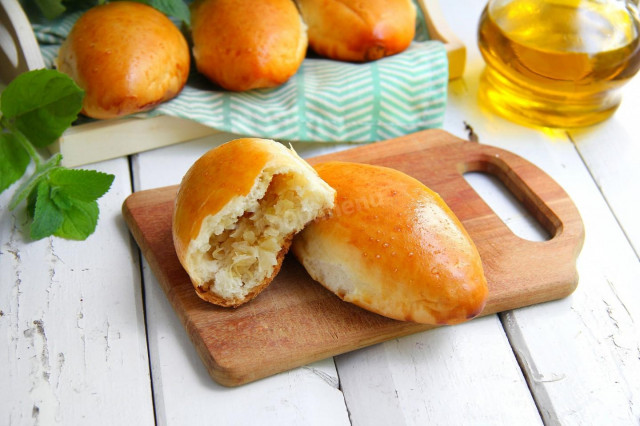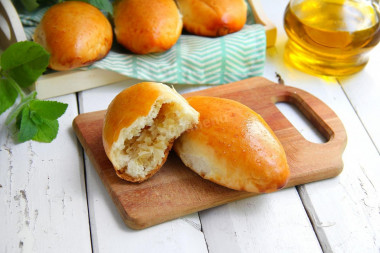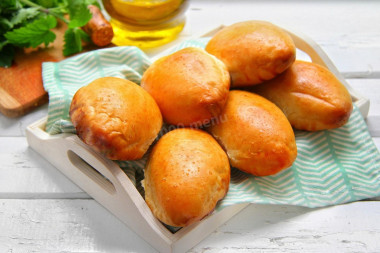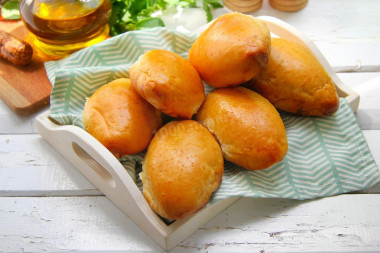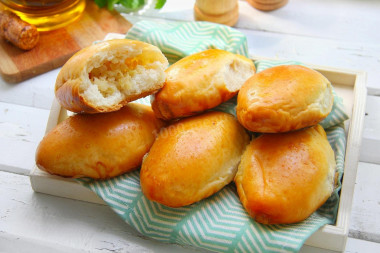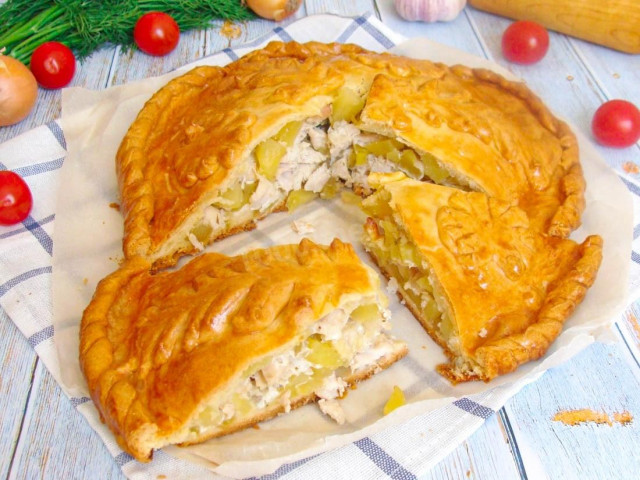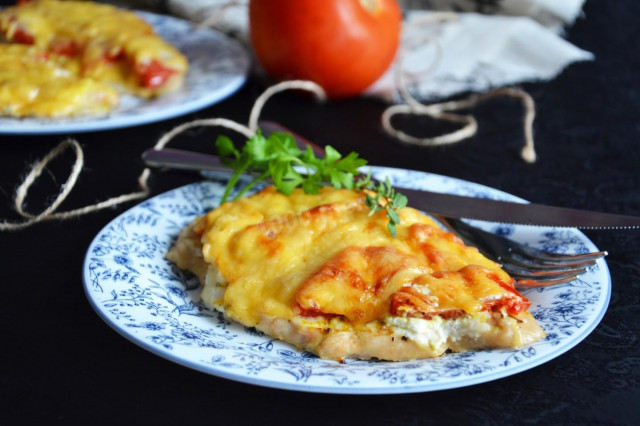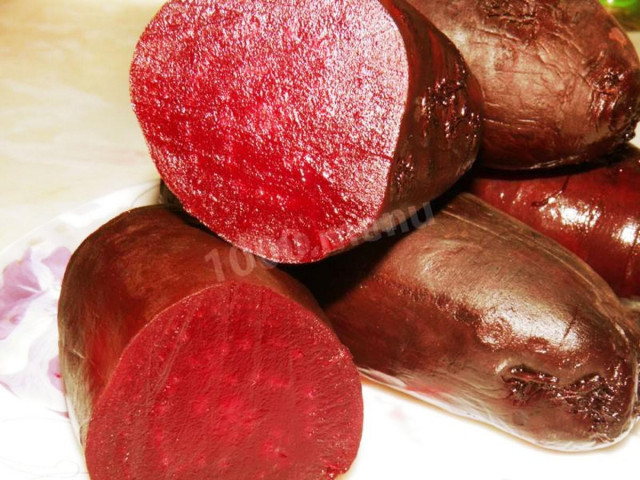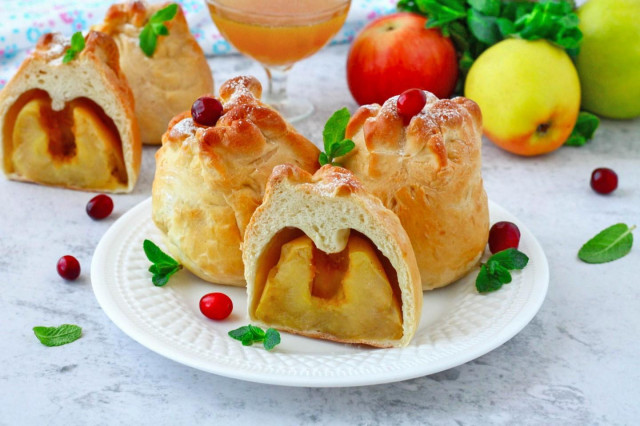Composition / ingredients
Step-by-step cooking
Step 1:
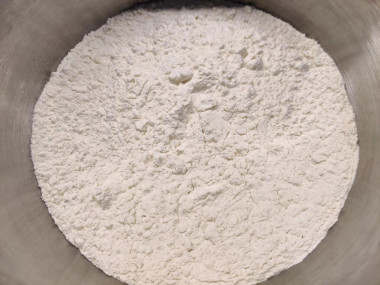
How to bake yeast pies with cabbage? In a deep bowl, sift the premium wheat flour twice. Since the flour is very different, I advise you to put about half a cup-a glass of sifted flour in a separate container, and when kneading add it (if necessary). Be prepared for the fact that due to the properties of flour, it may need less or even a little more than according to the recipe.
Step 2:
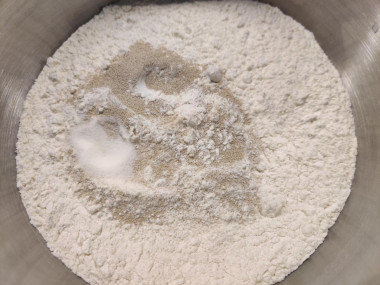
Add salt to the main part of the flour to enhance the taste of the dough and dry yeast (read the instructions on the package, we need those that are mixed immediately with flour). Yeast needs proven, with a good shelf life, so as not to spoil the dough. If you doubt their performance, it is better to prepare a sourdough.
Step 3:
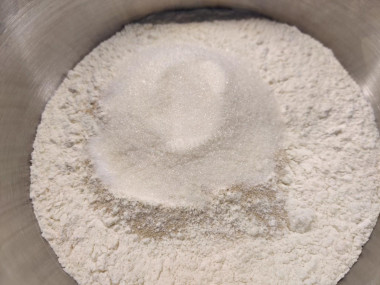
Add granulated sugar. Without it, the dough will turn out bland.
Step 4:
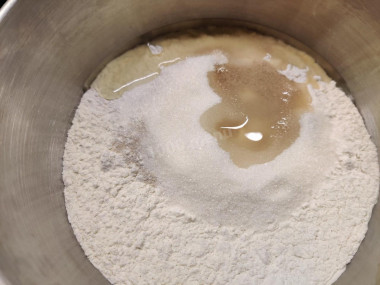
Add sunflower oil.
Step 5:
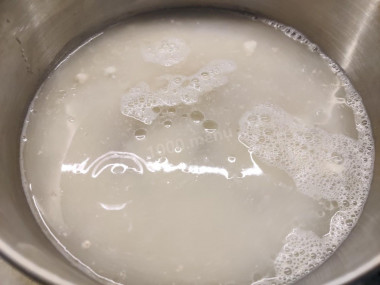
And pour warm filtered water into a bowl. The hand should feel the temperature as pleasantly warm, but not hot, so that the yeast does not die.
Step 6:
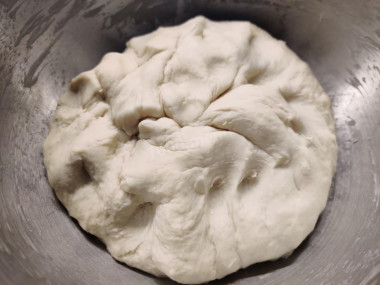
Knead the dough first with a spoon and then with your hands until it stops sticking strongly to your hands. This will happen after about 15-20 minutes of kneading. During the kneading process, add the remaining sifted flour as necessary (make sure that the dough is not too sticky and at the same time remains soft, not "clogged" flour). Then cover the dough with a towel and remove it to a warm place without drafts for about an hour.
Step 7:
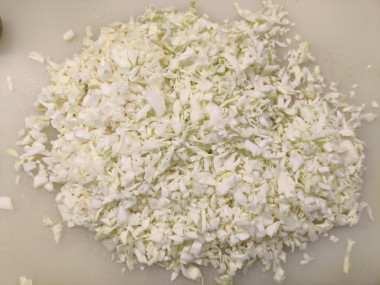
At this time, you can do the stuffing. Remove the top two or three leaves from the cabbage. Often they are withered and completely unsightly. Chop the vegetable as small as possible. I know housewives who manage to grate white cabbage on a coarse grater so that the filling in the pies is as homogeneous as possible.
Step 8:
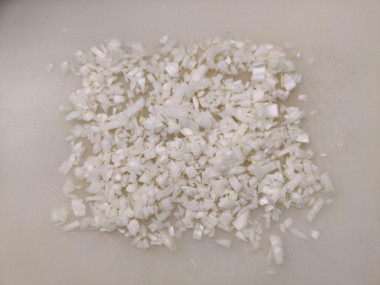
Peel the onion and finely chop it as well.
Step 9:
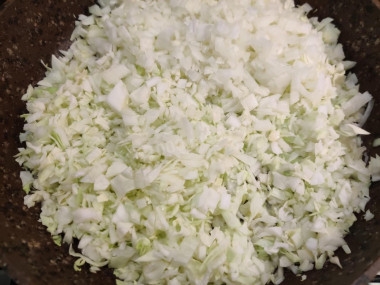
Put both vegetables in a non-stick frying pan with preheated butter and simmer over medium heat until soft, without covering with a lid. It takes about fifteen minutes. We are trying to achieve the evaporation of excess moisture from the cabbage.
Step 10:
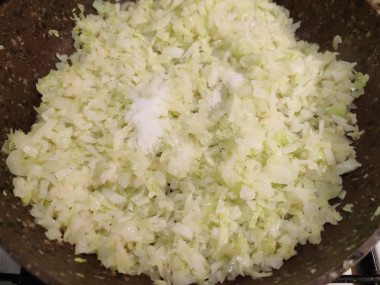
At the very end, add salt and a little sugar. This little trick will make the filling more interesting to taste. Be sure to try the filling to see if it is good for your taste. Cool the filling. As a child, I adored eating cabbage in the filling for pies right with a spoon. She is really very good.
Step 11:
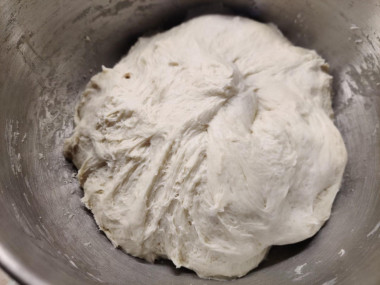
After about an hour, the dough will fit well. The time is indicated approximately and depends on the temperature in the room, the absence of drafts and yeast activity. Knead the dough that has come up with your hands and put it back on for about another twenty minutes.
Step 12:
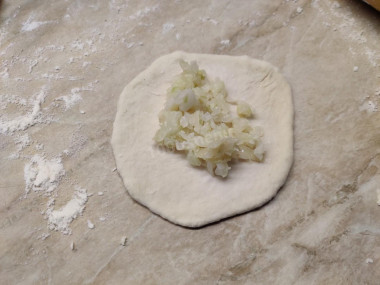
Dust the table with flour, remove the dough from the bowl. And, cutting off approximately the same pieces from the dough (I have 70 grams each), roll them into circles about half a centimeter thick. The size of the pies themselves depends on which pieces you will cut. Place a tablespoon of filling in the center of the dough.
Step 13:
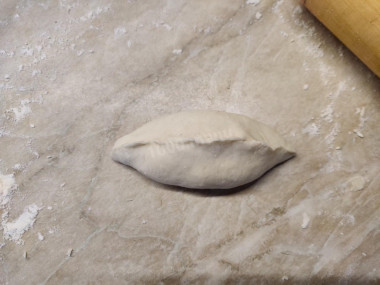
Pinch the edges of the dough tightly, bringing them up, and connecting them together.
Step 14:
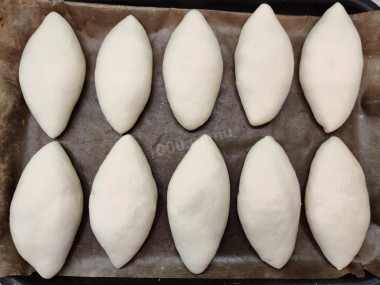
Spread the pies on a baking sheet covered with baking parchment, seam down! Make the distance between the pies larger than in my photo. My pies ended up slightly touching the barrels.
Step 15:
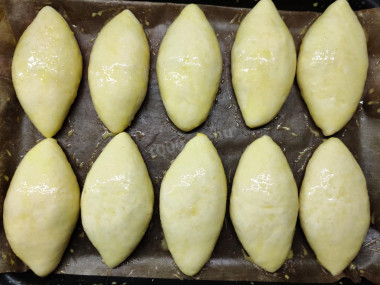
Grease the pies with yolk and leave to rest for ten to fifteen minutes. During this time, preheat the oven to 180 degrees.
Step 16:
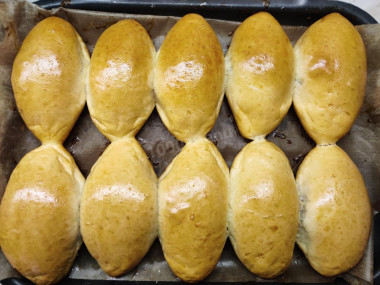
Bake the pies for about half an hour. The baking time and temperature are indicated approximately. Focus on your oven: the pies should be well browned from above and not burn from below.
Important!
Using dry yeast, it should be borne in mind that they occur in two forms: active and instant (read the instructions carefully before use!).
Active dry yeast looks like beads or small balls. Before applying them, they must be brought out of "sleep mode". To do this, the active yeast is diluted in warm sweet water, milk or whey. The resulting bubbles, foam or "cap" indicate that the yeast is ready for further use. Active dry yeast must be brought to complete dissolution in the liquid, otherwise, due to the remaining grains, the dough may not rise and the baking will be spoiled (yeast grains that have not dissolved in the liquid and got into the dough will no longer disperse on their own, which means they will not work).
Instant dry yeast is easier to use. They do not need to be activated before use. Such yeast, along with other ingredients, is simply added to the dough. As a result, the baking time is reduced.
It should also be remembered that both types of dry yeast may differ in their activity from different manufacturers.
I advise you to stew cabbage in butter in order to enrich the taste of the filling as much as possible.
The taste and volume of the filling will also depend on the time of extinguishing the cabbage.
From the specified number of ingredients, I got ten small, lush and very tasty pies.
Bon appetit!
Be prepared for the fact that flour may need more or less than indicated in the recipe. Focus not on the amount of flour, but on the desired consistency of the dough. Read a lot of useful information about flour and its properties in this article!
Keep in mind that everyone's ovens are different. The temperature and cooking time may differ from those specified in the recipe. To make any baked dish successful, use useful information in this article !
Caloric content of the products possible in the composition of the dish
- Granulated sugar - 398 kcal/100g
- Sugar - 398 kcal/100g
- Butter 82% - 734 kcal/100g
- Amateur unsalted butter - 709 kcal/100g
- Unsalted peasant butter - 661 kcal/100g
- Peasant salted butter - 652 kcal/100g
- Melted butter - 869 kcal/100g
- Vegetable oil - 873 kcal/100g
- Salt - 0 kcal/100g
- Water - 0 kcal/100g
- Onion - 41 kcal/100g
- Wheat flour - 325 kcal/100g
- White cabbage - 28 kcal/100g
- Boiled white cabbage - 21 kcal/100g
- Egg yolks - 352 kcal/100g
- Dry yeast - 410 kcal/100g

